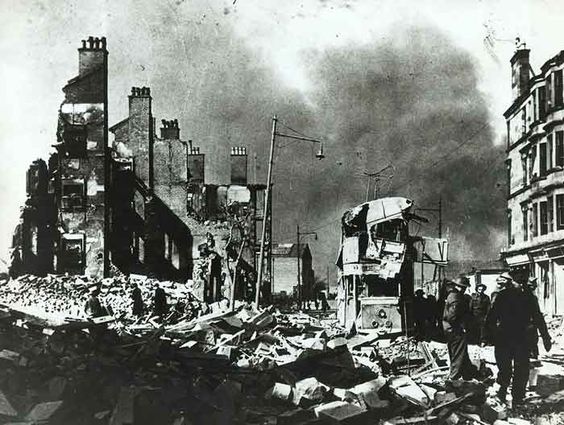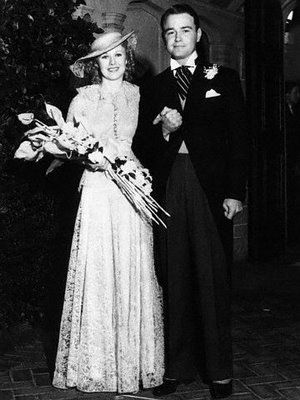Thursday 13 March 1941
 |
| "Soldiers demonstrate various styles of camouflage clothing, at Langford near Redlynch in Somerset, 13 March 1941." © IWM (H 8059). |
East African Campaign: Lieutenant-General William Platt continues preparing for his next assault on the small gorge that controls entry to the strategic crossroads of Keren. There are British patrols which sometimes have fierce firefights with Italian outposts. One such fight occurs in the early morning hours. British troops of the 4/16 Punjab attack an Italian observation post on Mount Gegghiro, and the entire British force is killed or captured. Another patrol by the 1st Royal Sussex on a ridge known as Pt. 2084 runs into Italians and is turned back. Effectively, this blocks British attempts to infiltrate in that direction, but there are other routes to take.
In Abyssinia, deposed Emperor Haile Selassie enters Burye. He is escorted by Orde Wingate and his Gideon Force.
European Air Operations: The RAF staged major raids on the night of the 12th, and tonight the Luftwaffe begins repaying the deed. Glasgow is hit, with devastating power. Shipbuilding center Clydeside in the Central Belt of Scotland is devastated by 59,400 incendiary bombs and 272 tons of high explosives dropped by 236 bombers. Out of 47,000 inhabitants, 35,000 are left homeless. By one reckoning, only seven houses in the entire city are left untouched. Estimates of the dead vary wildly but apparently are between 500-1000 people. Subsidiary targets include Merseyside again and Cardiff, where a hospital is damaged. The main RAF defenses are oriented in the south to protect London, so northern cities are particularly vulnerable.
Among the British ships damaged during the Glasgow/Merseyside raid:
- Freighter Clermiston (1448 tons, sunk but refloated and repaired)
- Destroyer HMS Goathland (damaged, under construction)
- Destroyer HMS Haldon (damaged, under construction)
- Freighter Trevarrack (5270 tons, refloated and repaired)
- Collier Belhaven (1498 tons, sunk)
The Luftwaffe also launches secondary attacks against Liverpool with 65 bombers, causing more damage and casualties to the already battered city. A bomb hits a shelter on Adlington Street, killing 65 people. However, Liverpool is a large city and can sustain numerous bombings while continuing to function. Damaged are British freighters Wearwood (4597 tons), Mountstewart (1099 tons) and Myrmidon (6278 tons). Hull also is hit with 78 bombers.
The RAF conducts Circus Operations during the day over Calais. This is half a dozen Blenheim bombers with a heavy fighter escort. Kommodore Major Werner Mölders of JG 51 gets another victory, shooting down British ace Squadron Leader Aeneas ‘Donald’ MacDonald of RAF No. 64 Squadron.
RAF Bomber Command raids Hamburg oil installations with 139 bombers. Luftwaffe night fighter pilot Egmont Prinz zur Lippe-Weißenfeld is flying a Bf 110 D-2 (Werknummer 3376 – factory number) of the 4./NJG 1 when it is hit by antiaircraft fire. He is wounded but manages to make an emergency landing at Bergen. His wounds are not serious, and he is soon back in action.
Coastal Command is active off Jutland. It claims several successes that are unverified.
 |
| Damage to Clydeside from the Luftwaffe attacks of March 1941 (www.educationscotland.gov.uk). |
The German S-boats have been active recently, and they attack again during the night. However, escort destroyer HMS Worcester of Convoy FS 34 prevents them from doing any damage.
The Luftwaffe bombs and sinks 1307-ton Norwegian freighter Perseus north of Bardsey Island. Everyone on board survives.
British 4738-ton freighter Tacoma city hits a mine and sinks near Rock Ferry Light in the Mersey. There are four deaths.
British 4891-ton freighter Ullapool hits a mine and sinks off Princess Stage, Mersey. There are 15 deaths.
British 270-ton tug Bullger hits a mine and sinks about 20 km north of the Tyne. Everyone survives.
Norwegian 842-ton freighter Samlanes hits a mine and sinks just off the Lizard. Everyone perishes.
British 523-ton freighter Ngatira hits a mine and is damaged in Bristol Channel. The captain beaches it. Ngatira later is refloated and repaired.
The Luftwaffe bombs British 17-ton smack Two Brothers at its dock in Kings Lynn (in Norfolk about 100 miles north of London). The ship later is refloated and beached as permanent storage.
Convoy SL 68 departs from Freetown.
US destroyer USS Ericsson (DD 440, Lt. Commander Geoffrey E. Sage) is commissioned.
U-79 and U-561 are commissioned.
Battle of the Mediterranean: General Erwin Rommel has returned from Berlin with orders to attack the British as soon as his forces can be brought over from Italy and assembled. He already has sent many units of the 5th Light Division forward to a line built west of El Agheila, the westernmost British outpost. Today at 14:00, Rommel himself moves to a new forward headquarters at Sirte, but the flight is grounded at Melaha. Rommel continues to Sirte by car. During the day, Rommel orders his men to occupy Mirada, which is about 100 km south of El Agheila.
Another Italian troop convoy carrying German and Italian troops arrives in Tripoli without incident.
The Luftwaffe bombs El Adem with fifteen Junkers Ju 87 Stukas and nine Junkers Ju 88 bombers.
At Malta, a curfew on lights has been imposed for the military. They are to be off by 23:00 and not turned on again until daylight. This is due to recent Luftwaffe attacks on power stations. There also has been looting following Luftwaffe raids which the government is taking measures against.
 |
| Sergeant Harry Howell. He perishes today, 13 March 1941, during a raid with RAF No. 50 Squadron. He is buried at the Berlin 1939-1945 War Cemetery. |
US/Hungarian Relations: Continuing his aggressive posture toward neutral nations that definitely are leaning away from Great Britain, President Roosevelt freezes Hungarian assets.
US/Australian Relations: Rear Admiral John H. Newton has taken a flotilla led by two cruisers, USS Chicago and Portland, to Samoa on an exercise. The voyage, while undoubtedly useful for training and "show the flag" purposes, has no discernible purpose. However, today it gets one. An adviser to the US Department of State, Stanley Hornbeck, asks Australian Minister to the United States R.G. Casey - who is Australia's first minister to a foreign country - a question: whether Australia would agree to an informal visit by Newton's force. Hornbeck proposes that the cruiser force arrives at Sydney on 20 March 1941 and Brisbane on 25 March 1941. Australian approval is quickly granted.
German Government: Alfred Rosenberg becomes head of the Reich Ministry for the Occupied Eastern Territories (Reichsministerium für die besetzten Ostgebiete). Rosenberg is a proponent of the reorganization of eastern territories to new distinct German districts - those that wait to be captured from the Soviet Union, that is. These areas are to be divided into Reichskommissariats. His appointment shows that Hitler basically approves of these plans. In addition, Rosenberg is a notorious racist who views Russians as subhuman - which is another tip-off of where the war is heading. While his theories attract favor, however, Rosenberg's actual sphere of control is to be limited to territories already conquered to date.
China: The Western Hupei Offensive continues to peter out and basically ends. The Japanese have achieved their objective, pushing the main Chinese forces back on Chunking and then devastating that occupied area. This is intended to create a lifeless buffer zone between the Chinese and Japanese. Satisfied with the results of the operation, the Japanese forces have returned to the main base/airfield at Ichang along the Yangtze.
The Chinese Nationalist (Kuomintang) forces re-occupying the lost ground without opposition claim a great victory. Naturally, who achieved what from the operation is a matter of both interpretation and national(ist) pride. However, it appears clear that the Japanese are not defeated in pitched battles, though there is an argument to be made that they retreat due to fear of being outflanked and infiltrated.
Belgian Homefront: Alfonso Bougne begins the Amis du Grand Reich Allemand (Friends of the Greater German Reich). This is a collaborator bank which is run in part by the Belgian version of the Gestapo (the euphemistically named Service d’Information Politique (Political Information Service).
Dutch Homefront: The German authorities continue clamping down following the abortive General Strike of February 1941. All Dutch radio societies are closed down. In addition, the Germans execute 15 members of the Dutch resistance, members of the outlawed De Geuzen communist organization, at Scheveningen (actually Waalsdorpervlakte, a nearby beach). At the last minute, the youngest three men are spared and sent back to prison.
American Homefront: Ginger Rogers, who just won an Academy Award for Best Actress, divorces Lew Ayres after a brief marriage.
 |
| Ginger Rogers and Lew Ayres in happier times. |
March 1941
March 1, 1941: Rettungsboje
March 2, 1941: Oath of Kufra
March 3, 1941: Germans in Bulgaria
March 4, 1941: Lofoten Islands Raid
March 5, 1941: Cooperation With Japan
March 6, 1941: Battle of Atlantic
March 7, 1941: Prien Goes Under
March 8, 1941: Cafe de Paris
March 9, 1941: Italian Spring Offensive
March 10, 1941: Humanitarian Aid
March 11, 1941: Lend Lease Become Law
March 12, 1941: A New Magna Carta
March 13, 1941: Clydeside Wrecked
March 14, 1941: Leeds Blitz
March 15, 1941: Cruisers Strike!
March 16, 1941: Kretschmer Attacks
March 17, 1941: Happy Time Ends
March 18, 1941: Woolton Pie
March 19, 1941: London Hit Hard
March 20, 1941: Romeo and Juliet
March 21, 1941: Plymouth Blitz
March 22, 1941: Grand Coulee Dam
March 23, 1941: Malta Under Siege
March 24, 1941: Afrika Korps Strikes!
March 25, 1941: Yugoslavia Joins The Party
March 26, 1941: Barchini Esplosivi
March 27, 1941: Belgrade Coup
March 28, 1941: Cape Matapan Battle
March 29, 1941: Lindbergh Rants
March 30, 1941: Commissar Order
March 31, 1941: Cookie Bombs
2020
March 1, 1941: Rettungsboje
March 2, 1941: Oath of Kufra
March 3, 1941: Germans in Bulgaria
March 4, 1941: Lofoten Islands Raid
March 5, 1941: Cooperation With Japan
March 6, 1941: Battle of Atlantic
March 7, 1941: Prien Goes Under
March 8, 1941: Cafe de Paris
March 9, 1941: Italian Spring Offensive
March 10, 1941: Humanitarian Aid
March 11, 1941: Lend Lease Become Law
March 12, 1941: A New Magna Carta
March 13, 1941: Clydeside Wrecked
March 14, 1941: Leeds Blitz
March 15, 1941: Cruisers Strike!
March 16, 1941: Kretschmer Attacks
March 17, 1941: Happy Time Ends
March 18, 1941: Woolton Pie
March 19, 1941: London Hit Hard
March 20, 1941: Romeo and Juliet
March 21, 1941: Plymouth Blitz
March 22, 1941: Grand Coulee Dam
March 23, 1941: Malta Under Siege
March 24, 1941: Afrika Korps Strikes!
March 25, 1941: Yugoslavia Joins The Party
March 26, 1941: Barchini Esplosivi
March 27, 1941: Belgrade Coup
March 28, 1941: Cape Matapan Battle
March 29, 1941: Lindbergh Rants
March 30, 1941: Commissar Order
March 31, 1941: Cookie Bombs
2020

No comments:
Post a Comment